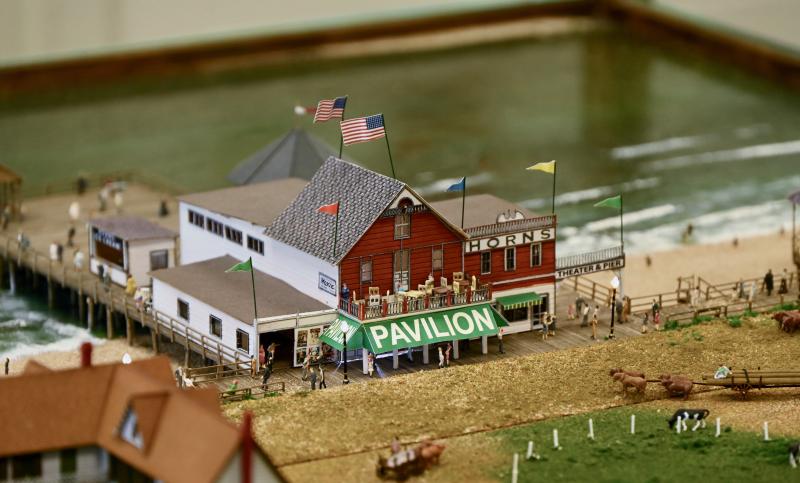Keeping on track on county’s railroads
When you write about history, it's similar to stepping into the unknown, because not being an expert on much of anything leaves you vulnerable to mistakes and incomplete information. You find conflicting dates, and sometimes the facts get a little lost in translation over the years.
Such is the case with my last column on the railroad coming to Sussex County.
First and foremost, the Delaware Coast Line Railroad has been sold and is now owned by Delmarva Central Railroad, a subsidiary of Carload Express, which operates on 188 miles of rail line from south of Wilmington to Hallwood, Va.
In southern Delaware, it has a switching station in Harrington, which sends trains east to Milford and south through Ellendale to its connection with the Maryland Delaware Railroad in Maryland. The line contains spurs to Milton, Harbeson and the Indian River power plant in Millsboro.
Also, the Historical Georgetown Association, not the chamber, restored the Georgetown train station.
And I stated that the railroad provided a way for local people to travel to other places. Although I wrote about rail connections to ports such as Seaford, it's important to note that steam ships also provided a way for locals to visit areas beyond Sussex County.
A Rehoboth diorama
The column generated several emails and phone calls from railroad enthusiasts who provided me with more information for Part 2. The most interesting contact was from Paul Lovett of Rehoboth Beach. Readers of the Cape Gazette should recognize his name because of his ongoing historical project the Golden Age of Rehoboth Beach, The Railroad Era diorama at the Rehoboth Beach Main Street office.
It's not just any diorama. It's historically accurate down to the minute details of what Rehoboth Avenue looked like in 1910, just a few years before devastating fires in 1912 and 1913 destroyed 30 buildings.
Lovett uses photos and an insurance map to design his buildings, which are created by a model builder in Miami, Fla. He has sponsors for each building, including several families who have ties to the railroad through their relatives. He also has sound effects and a working N-gauge train.
“I've become obsessed with the history of Rehoboth Beach and the railroad, and have to share this history with others,” he said.
He originally had plans to build a train layout of the railroad from Rehoboth Beach to Lewes, but he realized using HO-scale trains and buildings, it would have to be about a mile long.
He switched to N-scale and focused on Rehoboth Avenue from what is now the Lewes-Rehoboth Canal to the beach, Boardwalk and Horn’s Pavilion, which was destroyed in a 1914 storm. He’s been working on the project for five years.
He's given tours of his diorama 150 times and done dozens of lectures. He is also planning additional buildings and sections to add to the diorama, including nine buildings of the Tabernacle built as a religious retreat used by the people who first came to Reboboth.
Track in two sections
The first section of track to the Tabernacle dates back to 1878 and was operated by the Junction and Breakwater Railroad. The track was extended down Rehoboth Avenue five years later. Junction and Breakwater also operated a rail line to a pier on Delaware Bay near Lewes for passengers boarding steamships to New York City.
In 1895, the Queen Anne's Railroad branched off from the main north-south line in Harrington, ending in Lewes and Rehoboth Beach, with a major depot and station in Ellendale.
Two trains a day
From 1878 to 1928, there was a passenger train station in Rehoboth Beach. It was originally built near where the canal bridge is today, then moved within one block of the Boardwalk in 1884 when the track was extended. As the train came to the town, it brought prosperity, tourists and what Lovett calls the Boardwalk Barons, who ended up owning most of the beachfront property.
There were two regularly scheduled trains each day and excursion trains several times a week during the summer containing up to eight passenger cars packed with tourists from northern cities. Rehoboth Avenue was lined with hotels, a skating rink, boarding houses, bath houses, ice cream shops, souvenir shops and amusements, as well as a cow pasture and chickens roaming the street.
The Rehoboth train station, which is now the Rehoboth Beach-Dewey Beach Chamber of Commerce and Information Center, was moved off its original site to the south side of Rehoboth Avenue in 1928, when it served as a freight station until 1940.
It stayed on the site until the 1980s, when it was restored. Lovett said the center of the building dates to 1878.
The train had to back up over the canal bridge to turn around. The railroad crossing bridge into Rehoboth was where Oyster House Road is today. The canal, linking Delaware Bay and Rehoboth Bay, was completed in 1927.
A freight station was in operation on the west side of the canal to service canneries and other companies until 1960.
The man behind the railroad
Lovett said it's impossible to talk about the railroad and not mention Bill Bright. Bright was instrumental in bringing the railroad to Rehoboth and built the train station in 1878.
Bright came to Rehoboth as one of the founders of the Rehoboth Beach Camp Meeting Association of the Methodist-Episcopal Church. For 18 years, the town was owned and controlled by the association as an oasis away from the temptations of the day. He operated the Bright Hotel where Funland is today and was instrumental in 1891 in getting a railroad spur to serve factories and companies south of Rehoboth Avenue, which coincidentally passed by his hotel.
Bright allowed card playing and dancing at his hotel, which were forbidden by the elders.
“We are not sure if he was a saint or a sinner,” Lovett said, adding his life is the topic of one of his upcoming lectures.
Bright was president of a group of Boardwalk Barons who took over management of the town in 1891. It seems the camp meeting association, which sold lots in the town, was terrible at record keeping and did not have accurate property records. A law in 1891 revoked its charter, and for two years the town was known as Henlopen City.
“It would have become a Wild West railroad town if they hadn't seized control,” Lovett said.
Lovett is busy working on expanding his diorama to include the industrial area along the canal and is awaiting delivery of the Tabernacle model. There is no doubt that the railroad era was among the most dynamic periods in the county’s history. As the railroad expanded south, it connected Sussex towns with the outside world, opening up northern markets to the abundance of produce grown by Sussex farmers, and it also spurred new industries such as canneries.



























































